Many of our readers will be familiar with “the bicycle craze” of the late 1800s and the idea that the bicycle revolutionized the freedom women enjoyed from day to day and catapulted the Dress Reform Movement into the mainstream. This month I have had the privilege to work on an event for the Molly Brown House titled “Bloomers, Bicycles, and Bosoms” and explored the role of the bicycle. It is such a fun topic to research as the use of the bicycle was so brand new at the time, something that seems so second nature to us now. It is also fun as I love uncovering myths and exaggerations from history. There are many about the bicycle craze. Here’s a bit of what I have discovered and some additional fun information about this tire trend.
Bicycles: why women loved them
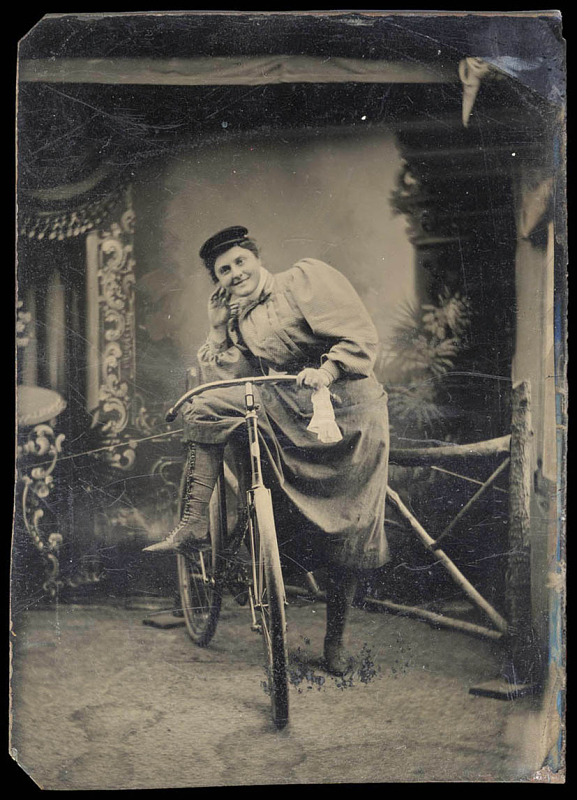
It is very true that in the 1890s bicycles “trended” among women. But keep in mind that as they were new items with a lot of novelty, that their use was restricted to white, middle/upper-class women. And yes, they took off. The 1890s were a time when more and more women were wanting more freedom and space in society and thinking about things like autonomy. So being able to go out without an escort appealed to many. Here are some reasons why so many females got excited about freedom on two wheels:
Cheaper and more convenient than a horse
The bicycle was available to the same class of women who would have likely had access to horses for transportation. However, horseback was not the most popular mode of daily transportation due to it often requiring a male escort, riding gear, and other complications.
And as far as personal transportation went, if a woman did not own her own horse, acquiring a bike was far more affordable. This appealed to The New Woman who may have been trying to make a place for herself in the world or the upper-class woman excited about a new hobby.
Riding promoted health
The bike also trumped the horse as many were promoting it as a way to improve one’s health. I have been reading from the 1896 Bicycling for Ladies and this is one of the primary benefits that the author gives for a woman to get a bike, as expressed in the opening pages of the book:
“The bicycle is but the means to the end, first of all, of health–health of mind and body. The human mechanism is far more difficult to adjust when out of order than the mechanisms of the bicycle.”
Was less public than the train
In the late 19th century there were growing concerns about women traveling alone or without a male or parental companion. This was a problem with many women itching for a bit of liberty. Taking a train required a ticket to be purchased as well as a lot of planning. Obviously picking up one’s bike and heading out for the day eliminated a lot of the barriers to travel.
Allowed for more time with members of the opposite sex
Riding a bicycle was seen as something appropriate for women to do on their own or even with members of the opposite sex without a chaperone and away they went! Outdoor activity was growing more popular through the 1800s, as we saw in How to Host a Victorian Picnic. Bicycles fit in well with this growing trend. Protestant preachers had very mixed feelings about the bicycle, and the fact that it made it easier for men and women to mingle was one reason why (more on that to come).
It was simply stylish!
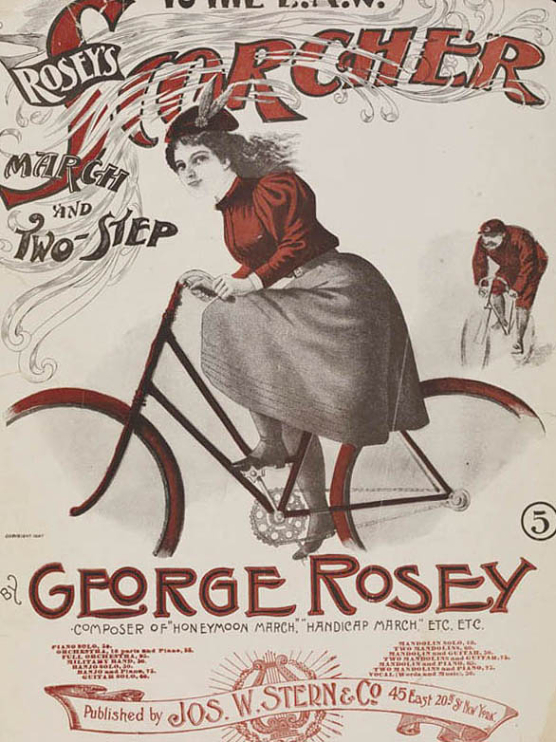
Some women simply wanted to bicycle because it was the fashion of the time. Magazines ran ads for bikes and clothing targeted to women and the activity was portrayed in the popular literature of the time. Many of the trendsetters of the time, including Susan B. Anthony sang its praises in ways that young women probably found quite intriguing. At age 76 she said: “Let me tell you what I think of bicycling. I think it has done more to emancipate women than anything else in the world. It gives women a feeling of freedom and self-reliance. I stand and rejoice every time I see a woman ride by on a wheel…the picture of free, untrammeled womanhood.”
So, why the controversy?
So, what’s the big deal and why was it seen as such a radical act? Well, if you think about the societal attitudes about women at the time, you may be able to sort-of understand why so many were confused about why women wanted mobility. I find the following quote from the 1895 San Francisco Chronicle to be so fascinating as it really outlines the acceptable activities for females of the time:
“It really doesn’t matter much where this one individual young lady is going on her wheel. It may be that she’s going to the park on pleasure bent, or to the store for a dozen hairpins, or to call on a sick friend at the other side of town, or to get a doily pattern of somebody, or a recipe for removing tan and freckles. Let that be as it may. What the interested public wishes to know is, Where are all the women on wheels going? Is there a grand rendezvous somewhere toward which they are all headed and where they will some time hold a meet that will cause this wobbly old world to wake up and readjust itself?”
Protestant preachers protest
In the article “Rapid Transit to Salvation: American Protestants and the Bicycle in the Era of the Cycling Craze” author and scholar Michael Taylor examines the response of the clergy to the bicycle craze. While today we may tend to think that the powers that be were mostly concerned about female cyclists, in reality, many keepers of morality, including preachers, thought that they were a problem for society as a whole. And many took to the pulpit to warn against the dangers for both sexes. Taylor identifies four main reasons that Protestant preachers feared freedom on two wheels. They were as followers:
It bred competition
As the popularity of the bicycle picked up, races began to be organized. Female racing did become popular for a few years, with races drawing more crowds than others sports in many cities. There was an ongoing conversation in the various church communities about the “morality” of organized sports, and many who felt that it was un-Christian, especially for good Christian men.
Increased accessibility to alcohol
This one really struck me as a bit odd, but at the time, there was a lot of concern that if you give young people the ability to move more freely, they will be more exposed to alcohol. Adams quotes a Reverend Moresy of New York as saying “drinking nowadays is one of the adjuncts of the bicycle. Will not the wheel lead many a young man and young woman into this vicious and destructive habit?”
Adams argues that in the end there was little evidence that this reflected the actual behavior of most people using bicycles for personal transportation.
It had sexual overtones
As I mentioned above, the bicycle was embraced by many because it made it easier to meet with members of the opposite sex. This was a huge concern for the pious, along with what was considered the indecent nature of the adapted clothing some women were wearing for the activity.
Adams also cites cases of young people using the bicycle to elope, especially from Chicago, a hotbed of the trend, to Milwaukee. This could be a topic for a future post!
It encouraged people to skip church
“By far the most common allegation leveled against the bicycle, however, was that it encouraged “non-churchgoing” or desecration of the Sabbath. There was, in fact, no doubt that the bicycle was at least partially responsible for dwindling attendance at religious services in the 1890s.”
Michael Taylor
The dwindling of church attendance is something that we are well aware of today, but it began all the way back in the Progressive Era. While there were several reasons young people have grown less interested in Sunday service, Adams states in his article that in an age where many only had one full day off work, bicycling was just another distraction and fun thing to enjoy during leisure time.
Bear in mind with all of the above that there was also the matter of preachers who began to use bicycles for pastoral purposes. Adams cites multiple cases of congregational controversy over how to treat such preachers.
Bicycling etiquette for ladies
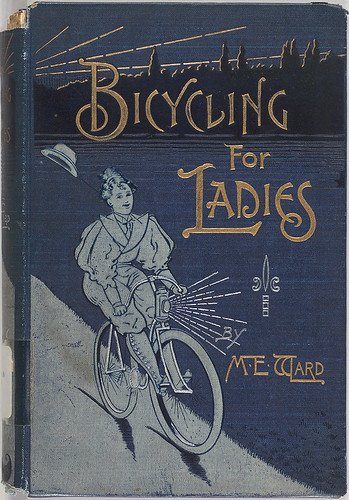
You know I love me a good deep dive into Victorian etiquette! As I mentioned, I have enjoyed reading from the 1896 Bicycling for Ladies by enthusiast Maria E. Ward. I have pulled a few of my favorite passages about cycling etiquette from the book, as well as a list of my favorite rules from an 1895 edition of New York World.
From Bicycling for Ladies:
“On the road attention, strict attention, to business and to the signals is necessary. Conversation is not prohibited; it is entirely dependent upon the nature of the surface you are traveling.”
“The consumption of a couple of sandwiches at noon cannot be regardless as a serious meal; and it is often better to push on after a short halt, moving slowly, than to sit around on rocks or stumps to wait for a proper digestive period to elapse. It is well to have a small reserve supply of food, such as chocolate or beef tablets, to tide one over a prolonged period between meals. Milk and bread and cheese are good to take as an extra meal. Never work hungry if it can be avoided; the bicycle will lag, and the cyclist wonder at being weary. Keep up the food supply by all means, for fatigue sets in quickly with the desire for food, and the system quickly becomes enfeebled.”
“I hold that any woman who is able to use a needle or scissors can use other tools equally well. It is a very important matter for a bicyclist to be acquainted with all parts of the bicycle, their uses and adjustment.”
“It is important always to remove perspiration before cooling; therefore, take a bath at once on coming in from a ride; if you cannot do that, rub off with a dry towel, or sponge with tepid water, and rub dry gently; then put on dry underclothing. The cold bath is most invigorating and refreshing, and never more refreshing than after bicycle exercise; but all cannot use it with good results. Provide for your change of underclothing before starting out, and if you do not intend to return, take it with you.”
And my favorite rules for lady cyclists from the 1895 New York World:
- Don’t boast of your long rides.
- Don’t wear loud hued leggings.
- Don’t cultivate a “bicycle face.”
- Don’t wear a garden party hat with bloomers.
- Don’t ask, “What do you think of my bloomers?”
- Don’t use bicycle slang. Leave that to the boys.
- Don’t discuss bloomers with every man you know.
- Don’t appear in public until you have learned to ride well.
- Don’t ignore the laws of the road because you are a woman.
- Don’t try to ride in your brother’s clothes “to see how it feels.”
- Don’t scream if you meet a cow. If she sees you first, she will run.
And for more on the affliction of “bicycle face,” check out this VOX article.
So, did the bicycle craze start a fashion revolution?
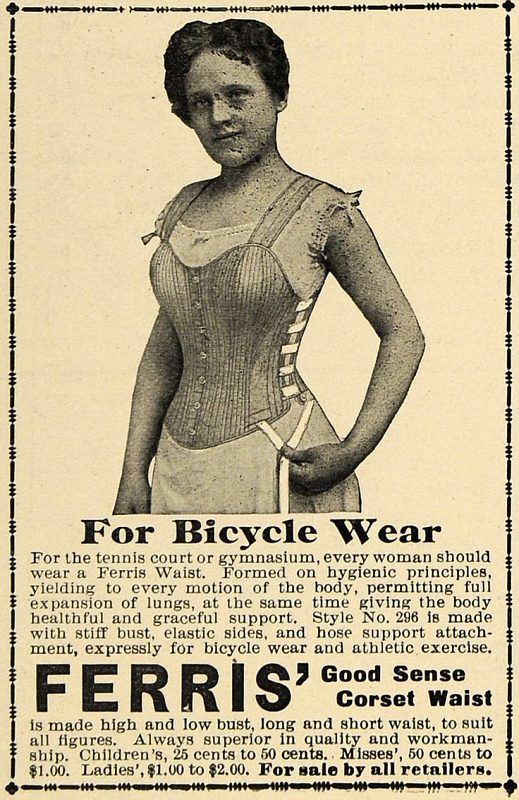
Kind of, not really. Although riding outfits, including Bloomers, were created and worn by the very passionate among the female cyclists, most women who took to the bike wore clothing that was much more socially acceptable, such as full hemmed skirts. Similar to what the early advocates of the Bloomers faced, the public ridicule a woman would be subjected to when appearing in public in her riding outfit did prevent them for being widely adapted. And despite what you may hear today, the corset was so ingrained as a part of daily wear that it was adapted for use on a bicycle, not abandoned. This, and the fact that the bicycle craze was relatively short lived.
Although the bicycle was here to stay, the trend died down by 1900 and was replaced with growing excitement over the automobile, another source of transportation available primarily to upper class white women. And as riding in a car doesn’t require the use of trousers, the Bloomers once again failed to truly catch on. The only force that could really change fashion was fashion itself. As long, sleek lines gave way to a decreased use of the corset and WWI forced women to wear more rational clothing in public, the shift was finally made.
So while the bicycle may have helped to pave the way for a more open-minded attitude about dress reform, it was not the start of a true revolution as some now view it as.
“The bicycle bestows and restores health; it has its limit, though it does so much that more seems always possible. Take the bicycle as it is, use it intelligently, enjoy it, and become an enthusiast.”
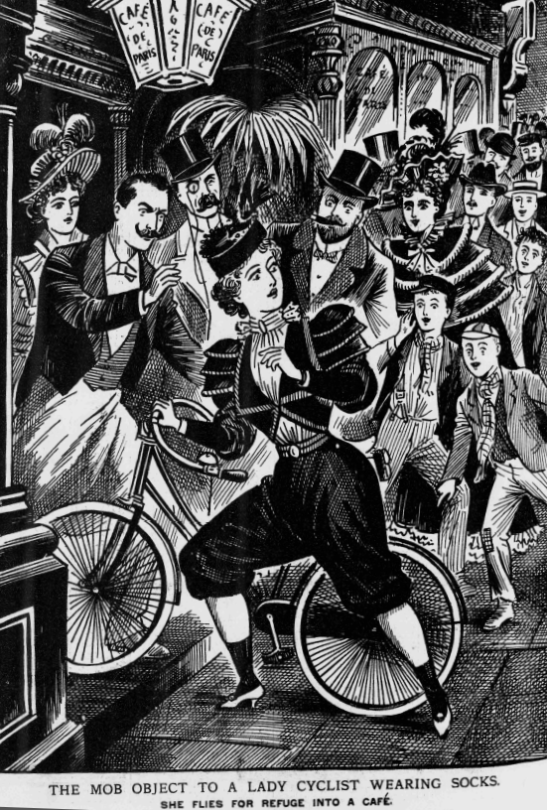
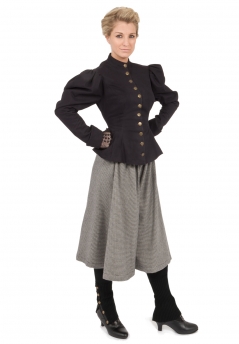

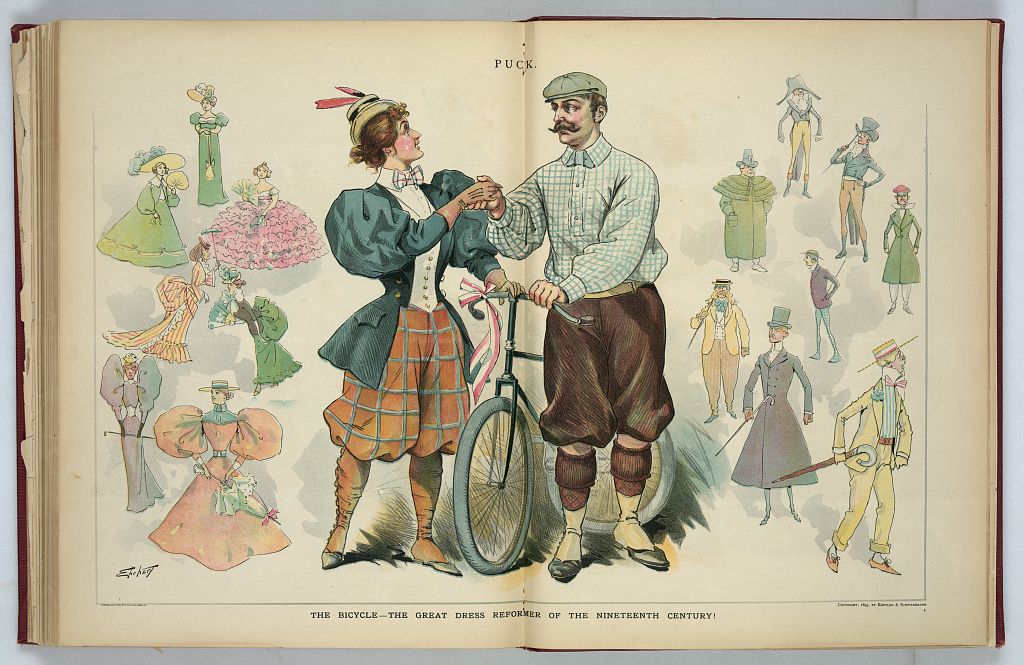












Thank you for your inquiry, Claudia! Janice will reach out with information on how to use the post!
I would like to know if it would be possible to republish this article, with attribution, of course, in the local history newsletter I write for our non-profit, Yreka Historic Preservation. How do I contact the appropriate individual?